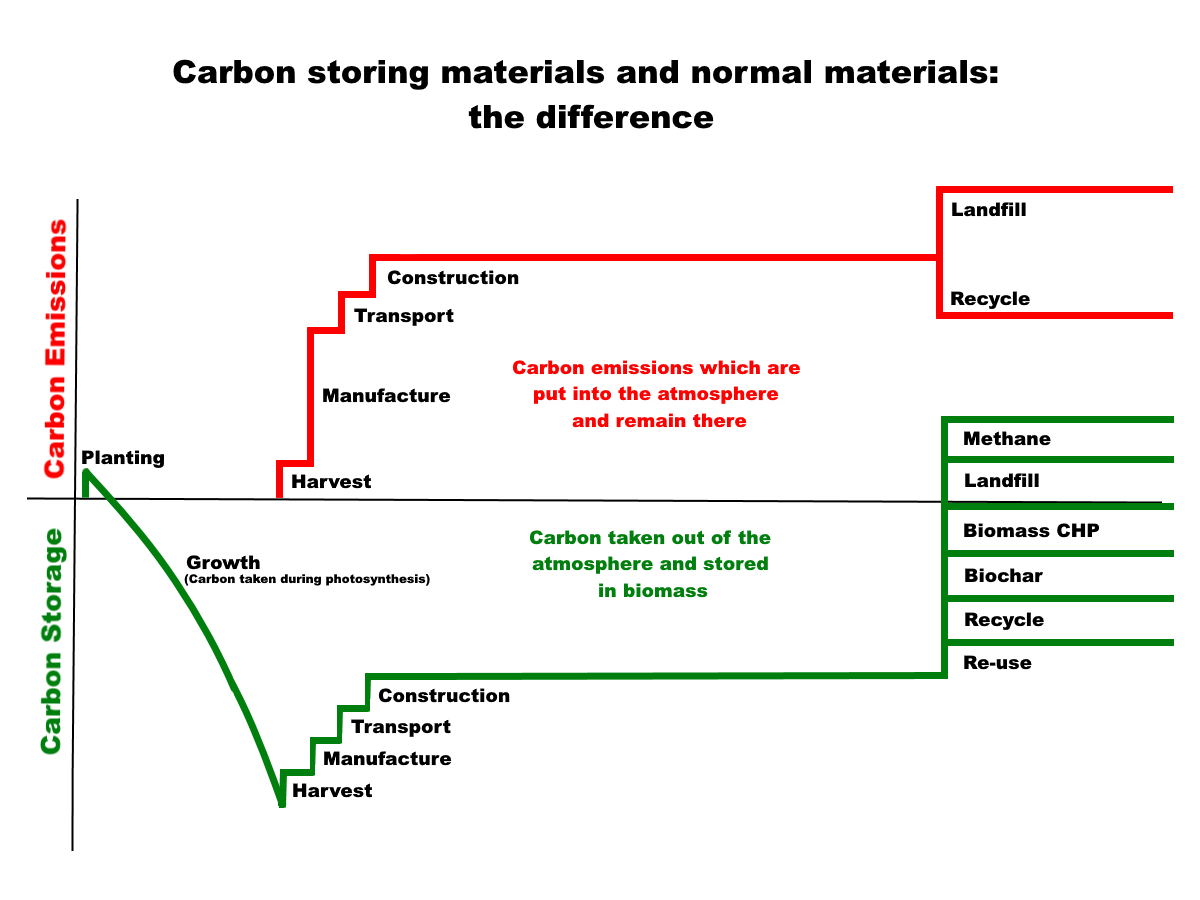Carbon Storing Materials: Sustainable Wood
Sustainable Wood Products
Globally, the construction and built environment sector is responsible for approximately 40% of global energy related CO2 emissions. A significant percentage of this comes from the extraction, processing, and energy-intensive manufacturing of building products such as concrete, steel, or aluminium, to name a few. To achieve net zero CO2 emissions by 2050, the construction industry must rapidly decarbonise whilst still meeting the needs of a growing urban population, which globally will see both continued increasing demand for new buildings and the urgent requirement to renovate existing buildings (brownfield sites).
To meet the demands set by the Paris Climate Agreement, the construction sector must utilize more carbon-friendly materials in order not just to reduce emissions, but to actively take carbon dioxide out of the atmosphere in the process.
There are a myriad of choices available for cleaner, more carbon efficient construction materials. Things like cork, bamboo, wool, cellulose, seaweed, and rice hulls fall under this bracket. And of course, so does wood!
Carbon storing biomass
Carbon Cost: The Difference
In terms of carbon cost, wood and other carbon storing materials compensate for the harvesting, manufacturing, transporting, and construction because when the product, in this case, a tree, is planted, it has to grow first. Over the course of the years it takes the tree to grow, it is always taking carbon dioxide out of the atmosphere during the process of photosynthesis. All of that carbon is then being stored in the tree, out of the air.
By the time the tree is harvested to be used in construction material, the process begins with a negative carbon footprint. This is because the tree has already absorbed so much carbon; in a sense it has paid for its own manufacture into construction materials. For the process of harvesting, manufacturing, transporting, and finally constructing something from the wood, the material is still in a negative carbon footprint.
Amazingly, the tree absorbs so much carbon dioxide that even by the time the buildings constructed with the wood have gone past their lifespan, the wood can be reused, recycled, turned into biochar, or burned at a cogeneration plant to generate electricity. After this long process from start to finish, the product will still be either in a negative carbon footprint, or assuming it has been sent to landfill, may tip over the scale a little and produce more carbon than it has absorbed. Worst case scenario is that the biomass can decay and produce methane, another greenhouse gas. But this figure would pale in comparison to the carbon footprint of materials like concrete, foam, or steel.
Since wood can grow worldwide, it makes it an optimal product to use for construction material, not being hindered by space or location. If more construction materials were replaced with wood, this would allow rapid decarbonisation while still providing sustainable growth with existing business models and technology.
Our real wood engineered floors are 94-99% recyclable, either to be re-installed or sent to household recycling centers.
Statistics show that one third of the world’s forests, which is still a significant amount, are threatened these days. The greatest cause for concern in terms of threatened woodland is what is called Primary Forests. These are forests that have been untouched by human hands for hundreds, if not thousands of years. Dense regions in the inner Amazon would count as Primary forests, and they store millions of tons of carbon. The remaining 2 thirds of global woodland are under management, with many being massively extended in the past 10-50 years.
Climate change is a big concern for everyone, and where there is negative news, there is also positive. Europe’s forest areas have actually increased by 10% over the last 30 years, at a rate of 643 thousand hectares per year. Often growing over old abandoned farm land in areas of higher altitude, storing much more carbon than the previous crops.
Likewise, in the United States and Canada sustainable forest management has resulted in more than 50 consecutive years where growth has exceeded harvest volumes.
Not all bad!


